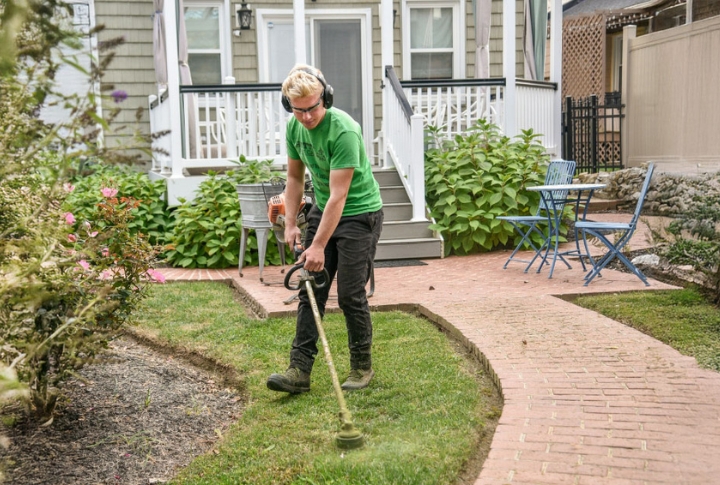
If you have a clean yard, be grateful because out here, people are battling stubborn weed growth weekly, if not monthly. It sneaks in between your best patches, throws off the look, and before you know it—bam, it’s a patchy mess.
But it doesn’t have to be that way. The trick is a little bit of know-how, timed just right. Let’s walk through how to keep your yard in check month by month, without the stress.
Spring Awakening: Set The Stage For Strong Growth
Spring is the ideal time to tackle weed seeds before they sprout by using herbicides that block weeds like crabgrass at the root level. To get the most out of pre-emergent herbicides, timing is key: apply them when soil temperatures reach about 55°F for several consecutive days.
While mowing can hint that the season is progressing, it’s not a reliable signal on its own. Monitoring soil temperature offers a more accurate and effective way to time your application. Once applied, avoid aerating or dethatching, which can break the barrier.
Next, it’s time to give that growing lawn some muscle.
Early Summer Boost: Strengthen Your Turf And Spot Treat
When temps start rising, grass enters a key growth phase, and so do weeds. That’s when you need to keep the mower deck high. It helps your grass thicken and shades out young weed seedlings, reducing their access to sunlight. It also encourages deeper root development, which makes the turf hold its ground against invaders.
As summer kicks in, target visible weeds with spot treatments, and zoom in on dandelions and plantain. Broadleaf killers work best when weeds are small and actively growing.
Late Summer Reset: Keep Heat-Loving Weeds In Check
This is the part of the season where it can go sideways fast. Lawns under heat stress thin out, and that’s all weeds need to sneak in. Broadleaf and grassy weeds that survived your earlier efforts may pop up again.
But don’t panic, just adjust watering to once or twice a week, deeply. Then, hold off on heavy fertilizing now, as it can stress cool-season grasses. Patch up bare spots with seed to discourage late-summer weeds from settling in.
Finally, it’s time to get serious about root-level attacks.
Fall Focus: Hit Perennials While They’re Vulnerable
Cooler nights signal perennial weeds like ground ivy and clover to pull resources underground. That’s precisely when herbicides can follow the plant’s flow—right to the roots. This makes fall treatments especially effective, even more so than in spring.
A targeted application now means fewer weeds next spring and a much healthier lawn. Mid to late fall is also perfect for overseeding, as the soil is still warm and rainfall is more consistent.
But none of it works without what’s next.
Year-Round Habits: Build A Lawn That Crowds Out Weeds
The real key to weed prevention is a strong lawn that leaves no room for invaders. That’s why consistent mowing, seeding thin areas, and feeding your lawn the nutrients it needs (at the right time) go further than any one-time spray.
A lush lawn competes better for water, sun, and nutrients, leaving weeds starved and shaded. Moreover, regular aeration and dethatching help roots breathe and soak up water more deeply.
Stick to these habits, and weeds will struggle to gain a foothold, no matter the month.

